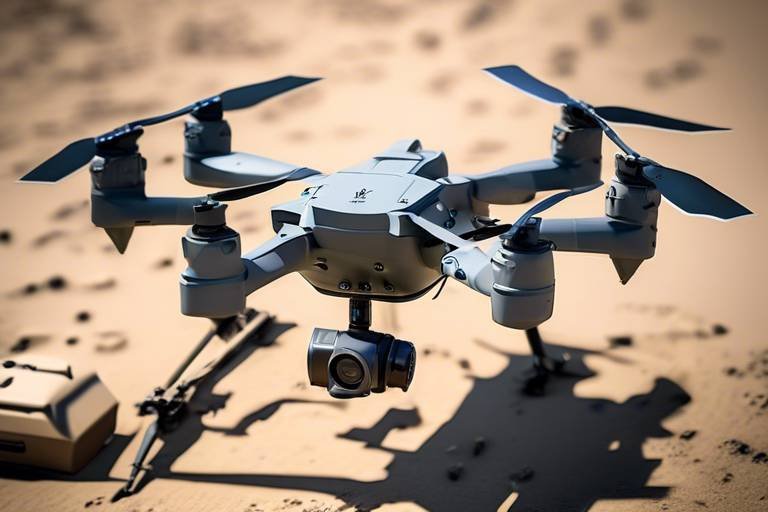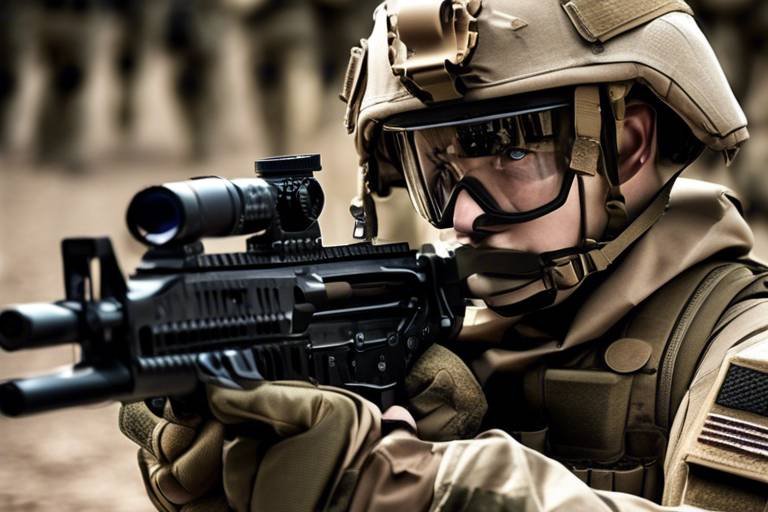Exploring the Use of Nano Drones in Battlefield Surveillance
In the rapidly evolving landscape of military technology, nano drones are emerging as a game changer in battlefield surveillance. These miniature unmanned aerial vehicles (UAVs) are not just small; they pack a punch when it comes to gathering intelligence and enhancing operational efficiency. Imagine a world where soldiers can access real-time data from the skies without putting themselves in harm's way. Sounds like something out of a sci-fi movie, right? But this is the reality we're stepping into. As we dive deeper into the innovative applications of nano drones, we'll uncover their remarkable capabilities, the advantages they bring to the table, the challenges they face, and what the future holds for this fascinating technology in warfare.
Nano drones are defined by their small size, typically weighing less than 250 grams, and their ability to perform complex surveillance tasks. Their compact design allows them to navigate through tight spaces and operate in environments that are otherwise inaccessible to larger drones or human operatives. Picture a tiny drone zipping through a dense forest or hovering silently above a battlefield, gathering crucial intel without drawing attention. This level of discretion is invaluable in military operations, where every second counts and the element of surprise can determine the outcome of a mission.
The incorporation of nano drones into military surveillance strategies offers a plethora of advantages. First and foremost, their enhanced mobility allows them to quickly adapt to changing battlefield conditions. Unlike traditional surveillance methods, which may rely on fixed positions or larger aircraft, nano drones can be deployed rapidly and repositioned as needed. This flexibility is crucial for maintaining situational awareness in dynamic environments.
Moreover, the reduced risk to personnel cannot be overstated. By utilizing these drones, military forces can gather intelligence without exposing soldiers to potential threats. Imagine being able to monitor enemy movements from a safe distance, all thanks to these high-tech gadgets. This not only saves lives but also allows for more strategic planning and execution of operations.
Nano drones excel in real-time reconnaissance, a capability that can significantly alter the course of military engagements. They can gather critical information about enemy positions, movements, and even potential weaknesses. With the ability to transmit data back to command centers instantly, military leaders can make informed decisions on the fly. This is akin to having a bird's-eye view of the battlefield, enabling forces to stay one step ahead of their adversaries.
One of the most compelling features of nano drones is their stealth capability. Due to their small size and low noise levels, these drones can operate undetected in enemy territory. This stealth factor is crucial for successful intelligence gathering, as it minimizes the risk of alerting the enemy. Imagine a tiny drone silently capturing images and data while enemy forces remain oblivious to its presence. This level of invisibility can be a decisive advantage in modern warfare.
Equipped with advanced sensors and high-resolution cameras, nano drones facilitate comprehensive data collection. The information gathered can be analyzed in real-time, providing actionable intelligence to military commanders. This capability is akin to having a constantly updated map of the battlefield, which can be crucial for planning attacks or defensive maneuvers. The ability to process and analyze data on the spot can lead to quicker response times and more effective strategies.
While the advantages of nano drones are clear, their deployment is not without challenges. Technological limitations, regulatory hurdles, and potential vulnerabilities to enemy countermeasures can impede their effectiveness. Understanding these challenges is essential for maximizing the potential of nano drones in military operations.
Despite their impressive capabilities, current technological limitations pose significant challenges for nano drones. Issues such as battery life and payload capacity can restrict their operational range and effectiveness, particularly in prolonged surveillance missions. For instance, if a drone can only fly for a short duration, it may not be able to cover the necessary ground during critical operations. This limitation highlights the need for ongoing research and development to enhance the performance of these drones.
Another challenge is the susceptibility of nano drones to enemy countermeasures. Techniques such as jamming or interception can render these drones ineffective, making it essential for military strategists to develop robust counter-countermeasures to protect drone operations in hostile environments. The battlefield is a dynamic space, and as drone technology advances, so too must the tactics to safeguard it.
The use of nano drones also raises important regulatory and ethical questions. Balancing the military advantages of these drones with privacy concerns and compliance with international laws is crucial for responsible deployment. As we embrace this technology, we must also consider the implications it has on civilian populations and the ethical responsibilities that come with it.
- What are nano drones? Nano drones are miniature unmanned aerial vehicles designed for surveillance and reconnaissance.
- What advantages do nano drones offer in military operations? They provide enhanced mobility, reduced risk to personnel, and improved situational awareness.
- What challenges do nano drones face? Challenges include technological limitations, vulnerabilities to enemy countermeasures, and regulatory concerns.
- How do nano drones improve reconnaissance? They can gather real-time data on enemy positions and movements, aiding in strategic decision-making.
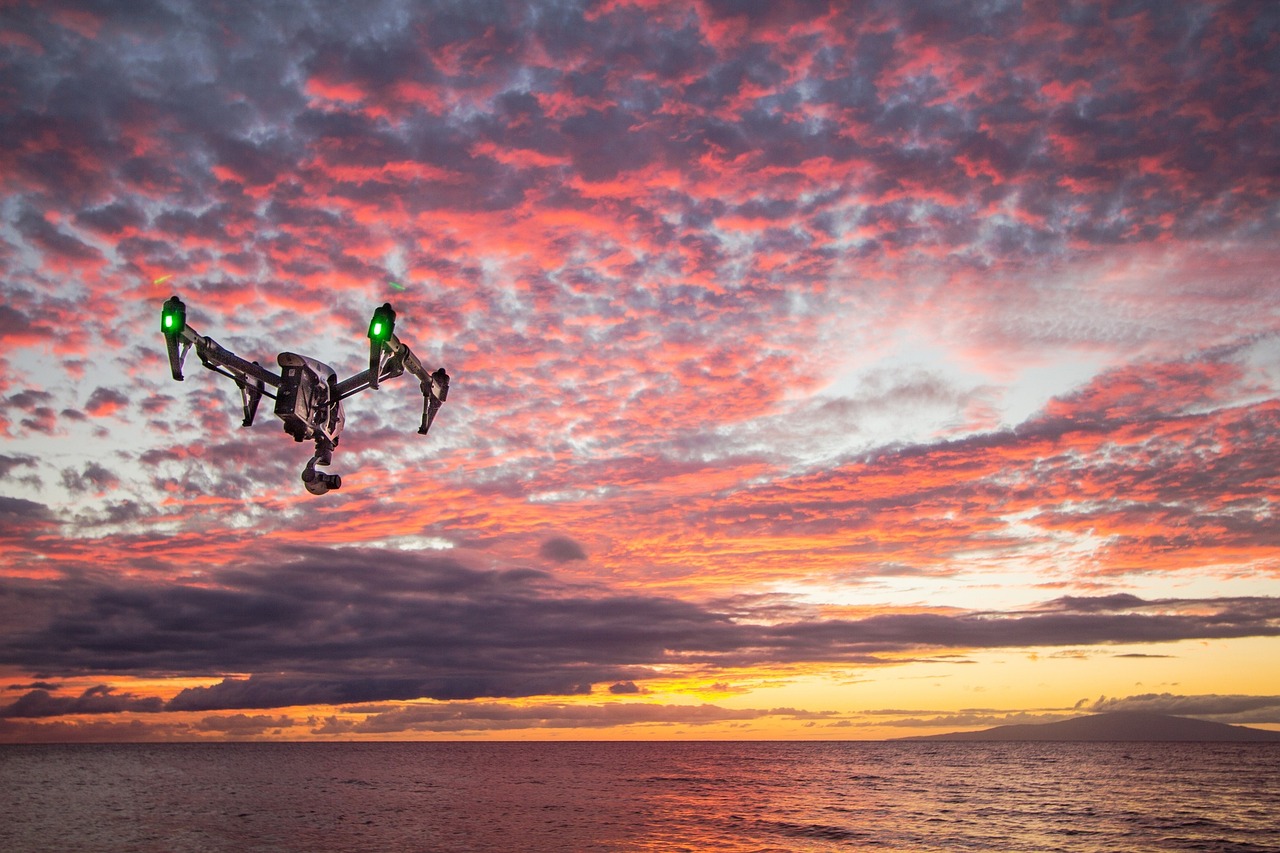
Introduction to Nano Drones
Nano drones are revolutionizing the landscape of military operations, particularly in the realm of surveillance. These miniature unmanned aerial vehicles (UAVs) pack a punch despite their small size, offering advanced surveillance capabilities that were once the stuff of science fiction. Imagine a drone that fits in the palm of your hand, yet can provide real-time intelligence from the heart of enemy territory. That's the power of nano drones!
One of the most exciting aspects of nano drones is their compact design. This allows them to operate in environments where larger drones would be easily detected or unable to navigate. Think about it: in a complex battlefield, every inch counts. Nano drones can slip through tight spaces, gather critical data, and return without raising alarm. They are the silent watchers, the eyes and ears of military forces, capable of monitoring enemy movements without being noticed.
Equipped with cutting-edge technology, these drones can be fitted with high-resolution cameras, infrared sensors, and even audio recording devices. This means they can collect a wealth of information, from visual reconnaissance to thermal imaging, all while remaining undetected. The data collected is invaluable, providing military commanders with actionable intelligence that can influence the outcome of operations.
To give you a clearer picture, here’s a quick comparison of traditional drones versus nano drones:
| Feature | Traditional Drones | Nano Drones |
|---|---|---|
| Size | Large | Miniature |
| Stealth | Moderate | High |
| Operational Range | Extended | Limited |
| Payload Capacity | High | Low |
In summary, nano drones represent a significant leap forward in military surveillance technology. Their ability to operate discreetly and gather critical intelligence makes them a game-changer on the battlefield. As military strategies evolve, the integration of these tiny yet powerful devices will undoubtedly play a crucial role in future warfare.
- What are nano drones used for? Nano drones are primarily used for surveillance and reconnaissance in military operations, providing real-time intelligence without being detected.
- How do nano drones differ from traditional drones? Nano drones are smaller, more stealthy, and can operate in confined spaces, whereas traditional drones are larger and have a greater operational range.
- What are the challenges faced by nano drones? Challenges include technological limitations, susceptibility to enemy countermeasures, and regulatory and ethical considerations.
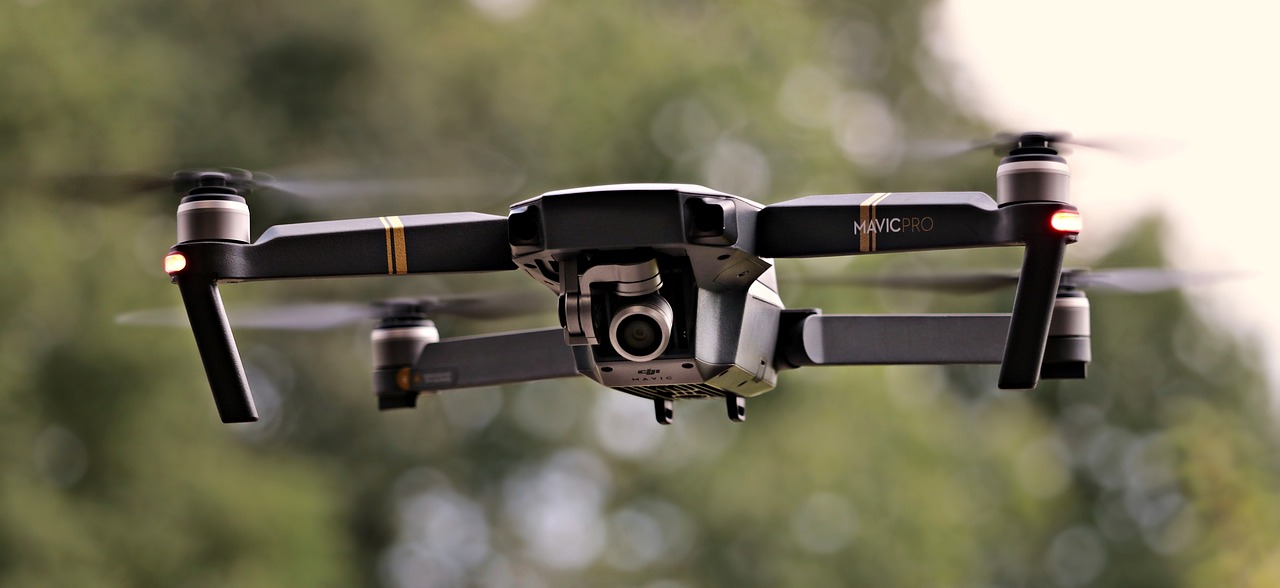
Advantages of Nano Drones in Surveillance
Nano drones are revolutionizing the way military operations are conducted, particularly in the realm of surveillance. One of the most significant advantages of these tiny marvels is their enhanced mobility. Unlike traditional drones, which can be cumbersome and require specific launch sites, nano drones can be deployed quickly and from various locations. This agility allows military personnel to adapt to rapidly changing battlefield conditions, ensuring that they always have the upper hand in intelligence gathering.
Another compelling benefit is the reduced risk to personnel. In conventional surveillance operations, soldiers often have to put themselves in harm's way to gather intelligence. Nano drones can fly into dangerous areas, collecting vital information without endangering lives. Imagine sending a tiny drone into a conflict zone to scout enemy positions instead of risking a soldier's life. This shift not only saves lives but also enhances the overall effectiveness of military operations.
Furthermore, nano drones excel in accessing hard-to-reach areas. Their compact size allows them to navigate through tight spaces, such as dense urban environments or rugged terrains, where larger drones simply cannot go. This capability is crucial for gathering intelligence in complex battlefield scenarios, where traditional reconnaissance methods may fall short. With nano drones, the military can achieve a level of situational awareness that was previously unattainable.
Moreover, the integration of advanced technology in nano drones enhances their data collection and analysis capabilities. Equipped with high-resolution cameras and sophisticated sensors, these drones can capture detailed imagery and gather critical data in real-time. This information is invaluable for military commanders, who rely on accurate and up-to-date intelligence to make informed decisions. The ability to analyze data on-the-fly means that actionable insights can be generated almost instantaneously, leading to quicker and more effective responses on the battlefield.
To summarize, the advantages of nano drones in surveillance are numerous and impactful. They include:
- Enhanced mobility for rapid deployment
- Reduced risk to personnel, keeping soldiers safe
- Access to hard-to-reach areas for comprehensive intelligence gathering
- Advanced data collection and analysis for real-time decision-making
As military technology continues to evolve, the role of nano drones in surveillance will likely expand, paving the way for safer and more efficient operations. The future of warfare may very well depend on these tiny yet powerful tools, transforming how conflicts are approached and managed.
1. What are nano drones?
Nano drones are miniature unmanned aerial vehicles designed for a variety of applications, including surveillance and reconnaissance in military operations.
2. How do nano drones enhance military surveillance?
These drones provide enhanced mobility, reduce risks to personnel, allow access to hard-to-reach areas, and facilitate advanced data collection and analysis.
3. What challenges do nano drones face in the battlefield?
Challenges include technological limitations, vulnerabilities to enemy countermeasures, and regulatory and ethical considerations regarding their use.
4. Are nano drones effective in urban environments?
Yes, their compact size and agility make them particularly effective in navigating urban landscapes, providing critical intelligence that larger drones cannot achieve.
5. What is the future of nano drones in military operations?
The future looks promising, with advancements in technology likely to enhance their capabilities, making them an integral part of military strategy.
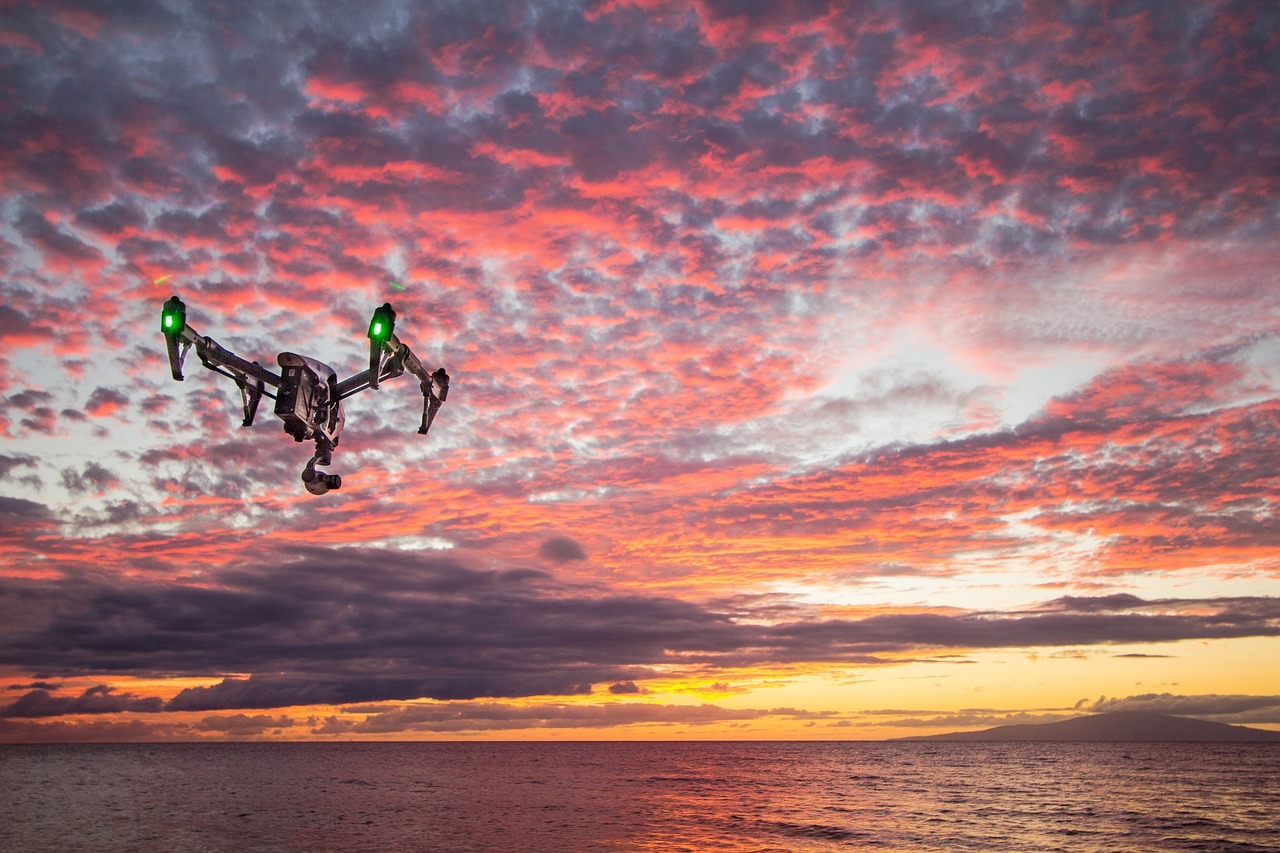
Improved Reconnaissance
In the ever-evolving landscape of modern warfare, real-time reconnaissance has become a pivotal element that can make or break military operations. The advent of nano drones has revolutionized how reconnaissance is conducted on the battlefield. These miniature unmanned aerial vehicles (UAVs) are not just flying cameras; they are sophisticated tools that offer unparalleled advantages in gathering intelligence. Imagine being able to send a drone the size of a bird into enemy territory, capturing crucial information without ever being detected. This capability is not just a game-changer; it’s a strategic advantage that can shift the tide of conflict.
One of the standout features of nano drones is their ability to conduct surveillance missions in real-time. This means that military forces can receive immediate updates on enemy positions, troop movements, and other critical data. This instantaneous flow of information allows commanders to make informed decisions on the fly, enhancing operational planning and execution. For instance, if a unit is planning an assault, having access to real-time intelligence can help them adjust their strategy based on the latest enemy movements. It’s like having a tactical map that updates itself every second, providing an edge that traditional reconnaissance methods simply can’t match.
Furthermore, nano drones can be equipped with a variety of sensors and cameras, each designed to gather specific types of data. Consider the following capabilities:
| Sensor Type | Function |
|---|---|
| Infrared Cameras | Detect heat signatures, useful for spotting enemy troops or vehicles at night. |
| High-Resolution Cameras | Capture detailed images for identifying enemy installations or troop formations. |
| Acoustic Sensors | Monitor sounds in the environment, helping to detect movements or conversations. |
This array of sensors allows for a comprehensive understanding of the battlefield. By analyzing the data collected, military analysts can piece together a clearer picture of the enemy’s capabilities and intentions. In essence, nano drones turn the battlefield into a transparent landscape, where every movement is monitored, and every decision can be backed by solid intelligence.
Moreover, the mobility of nano drones enables them to access areas that are often difficult or dangerous for human reconnaissance teams. They can fly into tight spaces, hover over enemy positions, and even navigate through urban environments without raising alarms. This flexibility not only enhances the quality of intelligence gathered but also significantly reduces the risk to personnel. Instead of sending soldiers into potentially hostile situations, commanders can rely on their drones to scout ahead, ensuring that human lives are protected while still gaining the necessary insights.
In conclusion, the integration of nano drones into military reconnaissance operations represents a significant leap forward in warfare technology. With their ability to conduct real-time surveillance, gather diverse data, and operate in challenging environments, these tiny drones are proving to be invaluable assets on the battlefield. As military technology continues to advance, the role of nano drones in reconnaissance will likely expand, paving the way for even more innovative applications in the future.
- What are nano drones? Nano drones are small unmanned aerial vehicles designed for various applications, including surveillance and reconnaissance.
- How do nano drones improve reconnaissance? They provide real-time data, access hard-to-reach areas, and reduce risks to personnel during missions.
- What types of sensors can be equipped on nano drones? Nano drones can have infrared cameras, high-resolution cameras, and acoustic sensors, among others.
- Are there any challenges associated with using nano drones? Yes, challenges include technological limitations, susceptibility to countermeasures, and regulatory concerns.
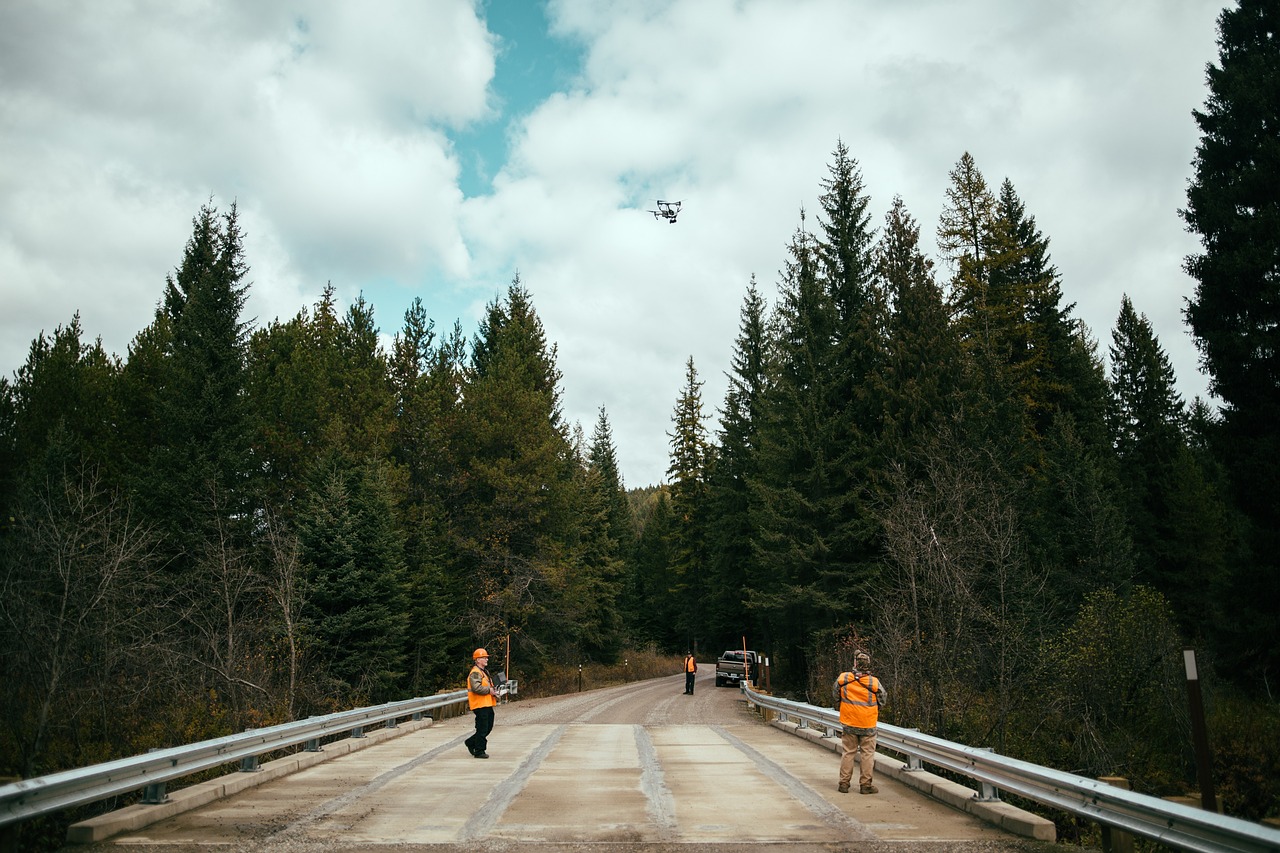
Stealth Operations
Nano drones are revolutionizing the way military operations are conducted, particularly in the realm of stealth operations. Imagine a tiny, almost invisible bird soaring through the sky, gathering vital intelligence without making a sound. This is the essence of nano drones. Their compact size and advanced technology allow them to infiltrate enemy territory without alerting adversaries, making them invaluable for modern warfare.
One of the key features that contribute to the stealth capabilities of these drones is their low noise levels. Unlike traditional drones that can be heard from a distance, nano drones operate almost silently, which is crucial when stealth is paramount. This ability to remain undetected gives military forces a significant edge, allowing them to gather intelligence without revealing their presence. In a battlefield scenario, this can mean the difference between life and death, as commanders receive real-time data without tipping off the enemy.
Furthermore, the discreet design of nano drones allows them to blend into their surroundings. Whether flying over dense forests, urban areas, or rugged terrains, these miniature drones can navigate complex environments with ease. Their agility and maneuverability enable them to evade enemy detection systems, which are often designed to track larger, more conventional aircraft. This adaptability makes them perfect for reconnaissance missions where stealth is essential.
Moreover, nano drones are equipped with advanced sensors that enhance their stealth operations. These sensors can capture high-resolution images and videos, even in low-light conditions, allowing military personnel to gather crucial information without risking lives. The data collected can be transmitted in real-time back to command centers, providing a comprehensive view of the battlefield and enabling informed decision-making.
In addition to their operational advantages, the use of nano drones for stealth operations also raises important questions regarding ethical considerations. While their capabilities provide significant military advantages, they also pose challenges in terms of privacy and compliance with international laws. Striking a balance between effective surveillance and respect for civilian privacy is a complex issue that military strategists must navigate carefully.
In conclusion, the stealth operations enabled by nano drones represent a significant advancement in military technology. Their ability to operate undetected while gathering critical intelligence enhances situational awareness and decision-making on the battlefield. However, as we embrace these innovative tools, it is essential to consider the ethical implications and ensure that their deployment aligns with international standards.
- What are nano drones? Nano drones are miniature unmanned aerial vehicles designed for various applications, including surveillance and reconnaissance.
- How do nano drones achieve stealth? Their small size, low noise levels, and advanced technology allow them to operate undetected in enemy territory.
- What are the advantages of using nano drones in military operations? Nano drones provide enhanced mobility, reduced risk to personnel, and the ability to access hard-to-reach areas, improving situational awareness.
- What challenges do nano drones face? Challenges include technological limitations, regulatory hurdles, and vulnerabilities to enemy countermeasures.
- Are there ethical concerns associated with nano drones? Yes, there are important regulatory and ethical questions regarding privacy and compliance with international laws.
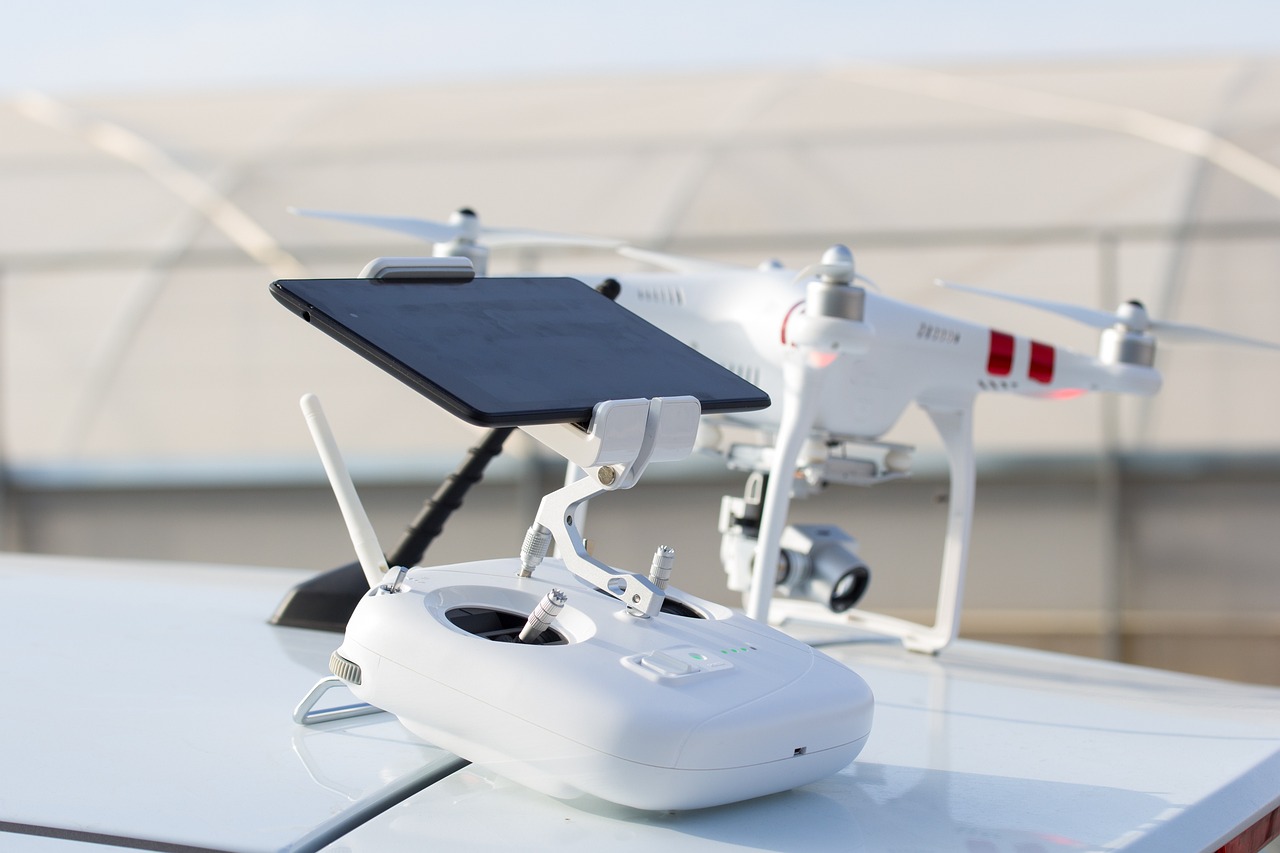
Data Collection and Analysis
In the realm of modern warfare, the ability to collect and analyze data swiftly can be the difference between victory and defeat. Nano drones are at the forefront of this transformation, equipped with sophisticated sensors and high-resolution cameras that enable them to capture a wealth of information in real-time. Imagine a tiny drone hovering silently above a battlefield, its eyes gathering crucial intelligence while remaining undetected by the enemy. This capability allows military forces to gather actionable insights that can inform tactical decisions almost instantaneously.
One of the standout features of nano drones is their ability to transmit data back to command centers in real-time. This live feed can include video footage, thermal imaging, and even data from environmental sensors, providing a comprehensive overview of the battlefield. With this information, commanders can assess enemy positions, monitor troop movements, and identify potential threats without putting personnel at risk. The integration of artificial intelligence into these drones further enhances their data analysis capabilities, allowing for pattern recognition and predictive analytics that can forecast enemy actions.
To illustrate the impact of data collection and analysis by nano drones, consider the following table that summarizes the types of data collected and their applications:
| Data Type | Application |
|---|---|
| Video Footage | Real-time surveillance of enemy activities |
| Thermal Imaging | Detection of hidden enemy positions, even in darkness |
| Environmental Data | Assessing terrain and weather conditions for strategic planning |
| Geospatial Data | Mapping out enemy territories for tactical advantages |
However, the effectiveness of data collection is not solely reliant on the technology itself. It also hinges on how well military personnel can interpret the information gathered. This is where training and experience come into play. Soldiers and analysts must be adept at analyzing the data to make informed decisions quickly. The faster they can process this information, the more agile and responsive the military can be on the battlefield.
Moreover, the ethical implications of using nano drones for data collection cannot be overlooked. As these drones gather intelligence, they also raise questions about privacy and the potential for misuse of data. It's essential for military organizations to establish robust protocols that govern the use of this technology, ensuring that it is used responsibly and in compliance with international regulations.
- What are nano drones? Nano drones are miniature unmanned aerial vehicles designed for various applications, including surveillance and reconnaissance in military operations.
- How do nano drones collect data? They are equipped with advanced sensors and cameras that capture video, thermal images, and environmental data, which can be transmitted in real-time to command centers.
- What are the advantages of using nano drones in surveillance? Their compact size allows for stealth operations, improved reconnaissance, and reduced risk to personnel, enhancing overall situational awareness.
- What challenges do nano drones face? Challenges include technological limitations, susceptibility to enemy countermeasures, and ethical concerns regarding privacy and data usage.
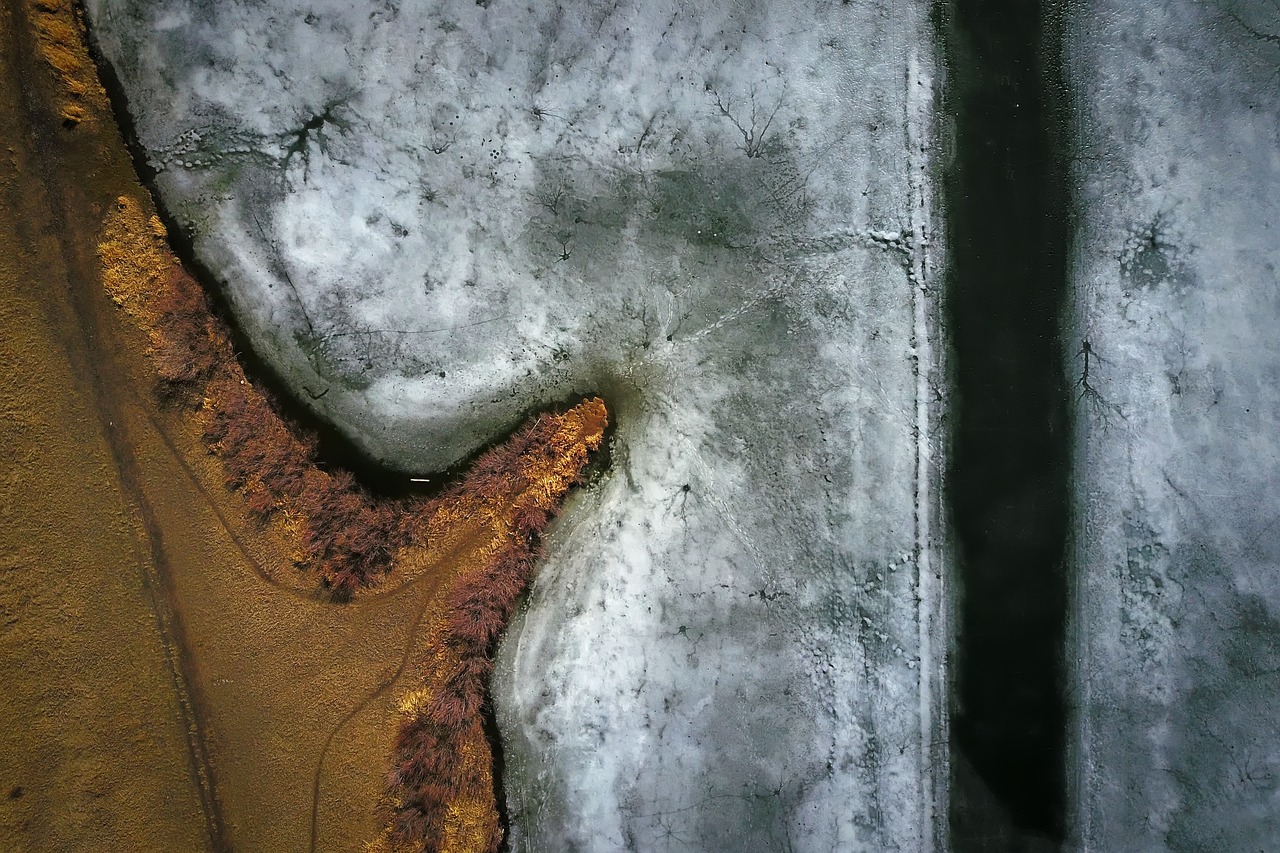
Challenges in Using Nano Drones
The deployment of nano drones in battlefield surveillance, while promising, is not without its challenges. These miniature unmanned aerial vehicles, despite their advanced capabilities, face several hurdles that can impact their effectiveness in military operations. One of the primary challenges is the technological limitations inherent in their design. For instance, the battery life of nano drones is often limited, which restricts the duration they can remain airborne. Imagine trying to keep a tiny hummingbird in the air for a long time; eventually, it will tire out. Similarly, the energy constraints of nano drones can limit their operational range, making them less effective for prolonged missions in hostile environments.
Furthermore, the payload capacity of these drones is another significant limitation. Due to their small size, they can only carry lightweight equipment, which may not always meet the demands of complex surveillance tasks. For example, while a larger drone can carry high-resolution cameras and advanced sensors, a nano drone might struggle to balance weight with functionality. This trade-off can lead to compromises in the quality of the data collected, ultimately affecting the intelligence gathered during operations.
Another challenge that cannot be overlooked is the vulnerability to enemy countermeasures. In the ever-evolving landscape of warfare, adversaries are continuously developing strategies to counter drone technology. Nano drones can be susceptible to jamming, where signal interference disrupts their communication with operators. Additionally, interception techniques can pose a risk, as enemies may deploy technology designed to detect and neutralize these drones. This cat-and-mouse game between drone operators and enemy forces creates an ongoing challenge that military strategists must navigate.
Moreover, the use of nano drones raises important regulatory and ethical considerations. As these technologies become more prevalent in warfare, questions surrounding privacy, surveillance, and compliance with international laws emerge. For instance, how do military forces ensure that their use of nano drones does not infringe upon the rights of civilians in conflict zones? The balance between military advantage and ethical responsibility is a delicate one, requiring careful thought and consideration.
In summary, while nano drones offer significant advantages in battlefield surveillance, they also come with a set of challenges that need to be addressed. From technological limitations to regulatory concerns, understanding these hurdles is essential for maximizing the potential of nano drones in military operations.
- What are nano drones? Nano drones are miniature unmanned aerial vehicles designed for various applications, including surveillance and reconnaissance.
- What are the main advantages of using nano drones in military operations? They offer enhanced mobility, reduced risk to personnel, and the ability to access hard-to-reach areas, improving situational awareness.
- What challenges do nano drones face? Challenges include technological limitations like battery life and payload capacity, vulnerabilities to enemy countermeasures, and regulatory and ethical considerations.
- How do nano drones improve reconnaissance? They can conduct real-time reconnaissance, gathering critical information about enemy positions and movements to enhance decision-making.
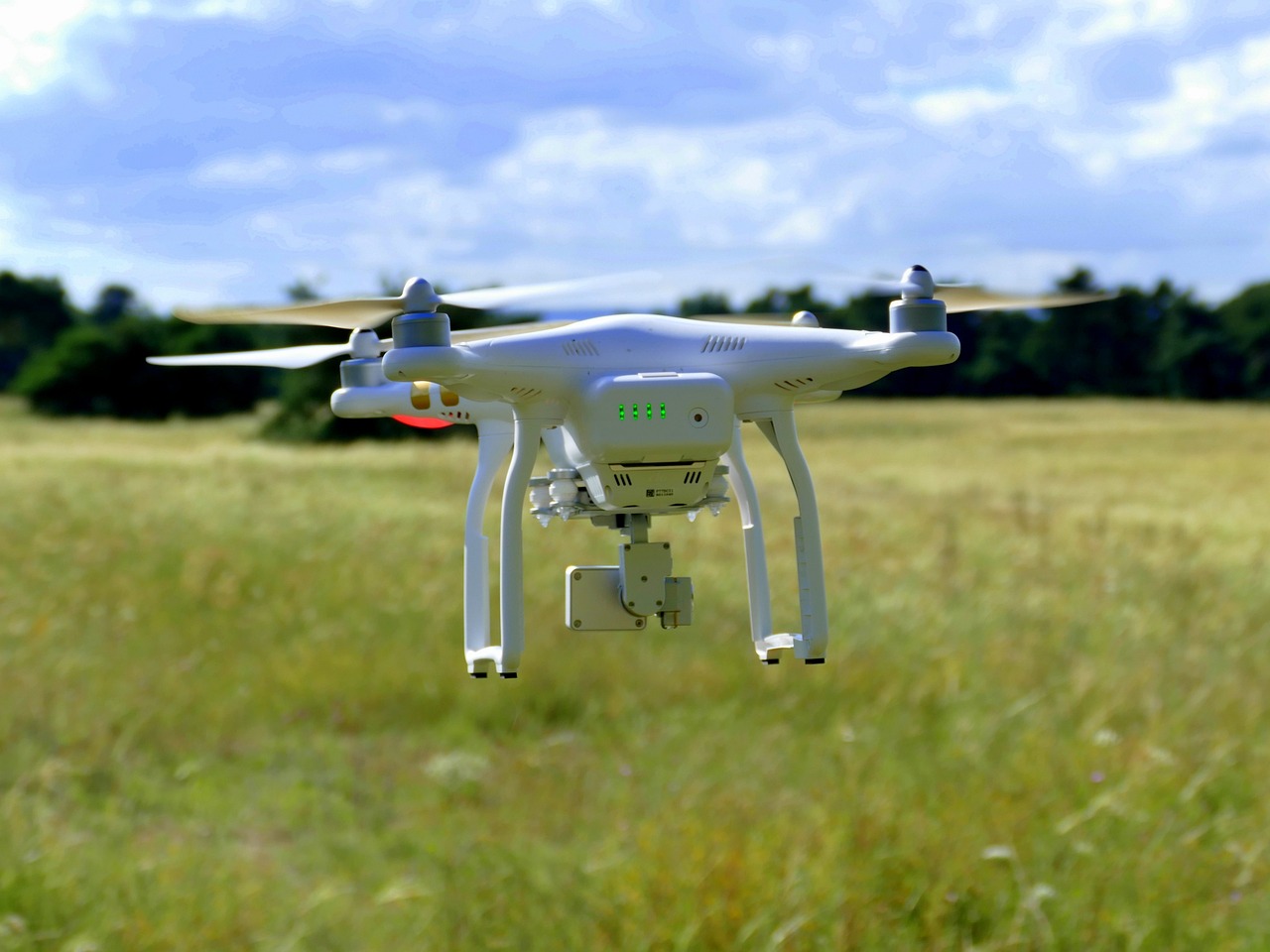
Technological Limitations
The rapid evolution of drone technology has undeniably transformed military operations, yet nano drones face several that can hinder their effectiveness on the battlefield. One of the most significant challenges is their battery life. Most nano drones are equipped with small batteries that, while lightweight, often limit flight time to a mere 20-30 minutes. This short operational window can be a critical drawback when missions require prolonged surveillance or reconnaissance. Imagine sending a tiny drone into enemy territory only to have it run out of power before completing its objectives; that’s a recipe for failure.
Another limitation is the payload capacity. Nano drones are designed to be compact and lightweight, which means they cannot carry heavy equipment. Typically, they can only accommodate small cameras and sensors. This restriction can affect the quality and type of data they can collect. For instance, while a standard drone might carry high-resolution imaging equipment, a nano drone may only be able to manage a basic camera, which might not provide the detailed intelligence needed for critical decision-making.
Furthermore, environmental factors can also impact the performance of nano drones. High winds, rain, and other adverse weather conditions can significantly affect their stability and flight capabilities. Unlike larger drones that can be equipped with stabilizing technology to handle such conditions, nano drones may struggle, making them less reliable in certain environments. This unpredictability is like trying to ride a bicycle in a storm; it’s not just challenging, it’s dangerous.
To illustrate these limitations, consider the following table that summarizes the key technological challenges faced by nano drones:
| Limitation | Description |
|---|---|
| Battery Life | Typically limited to 20-30 minutes of flight time, restricting operational range. |
| Payload Capacity | Can only carry lightweight equipment, limiting data collection capabilities. |
| Environmental Sensitivity | Adverse weather conditions can affect flight stability and reliability. |
In addition to these challenges, there are also software limitations. While many nano drones come equipped with sophisticated navigation systems, they often lack the advanced algorithms necessary for autonomous operation in complex environments. This means that operators must be highly skilled and attentive, as the drone may require manual control in unpredictable circumstances. It’s akin to navigating a ship through treacherous waters; even the most advanced vessel needs a competent captain to steer it clear of danger.
In summary, while nano drones represent a significant advancement in military surveillance technology, their must be addressed to maximize their potential on the battlefield. As research and development continue, we can only hope that future iterations of these remarkable machines will overcome these hurdles, allowing for even more effective and reliable military operations.
- What are nano drones? Nano drones are miniature unmanned aerial vehicles designed for surveillance and reconnaissance, often measuring just a few centimeters in size.
- How long can nano drones fly? Most nano drones have a flight time of approximately 20-30 minutes, depending on their battery capacity and operational conditions.
- What types of sensors can nano drones carry? Nano drones typically carry lightweight cameras and basic sensors, but their payload capacity limits the use of high-end equipment.
- Are nano drones affected by weather conditions? Yes, environmental factors such as wind and rain can significantly impact the performance and stability of nano drones.

Countermeasures and Vulnerabilities
As the battlefield evolves, so too do the tactics employed by both military forces and their adversaries. While nano drones present revolutionary advancements in surveillance, they are not without their vulnerabilities. One of the primary concerns is the potential for enemy countermeasures that can disrupt or neutralize these tiny aerial vehicles. For instance, adversaries may deploy electronic warfare tactics, such as jamming signals, which can render nano drones ineffective. This raises a crucial question: how can military forces safeguard their drone operations in such hostile environments?
To better understand this issue, let’s explore the various countermeasures that can threaten the effectiveness of nano drones:
- Signal Jamming: This involves disrupting the communication between the drone and its operator, which can lead to loss of control.
- Interception: Enemy forces may utilize specialized technology to intercept the data being transmitted by the drone, compromising the intelligence it gathers.
- Physical Destruction: Simple but effective, adversaries may resort to using conventional weapons to shoot down or disable nano drones.
Each of these countermeasures highlights the critical need for military planners to develop strategic responses. One possible solution could involve implementing redundant communication systems that can switch frequencies or utilize secure channels to avoid jamming. Additionally, enhancing the stealth capabilities of nano drones can make them harder to detect and intercept.
Moreover, the vulnerabilities of nano drones are not limited to technological threats. They also face challenges from environmental factors. For instance, harsh weather conditions such as high winds, rain, or snow can impact their flight stability and data collection capabilities. This means that while nano drones are designed to operate in various terrains, their effectiveness can be significantly reduced in adverse conditions.
As we delve deeper into the future of drone technology, it’s essential to consider the implications of these vulnerabilities. Military forces must prioritize the development of counter-countermeasures—strategies that not only protect the drones but also enhance their resilience against evolving threats. This could involve investing in research to improve battery life, payload capacity, and even the integration of artificial intelligence to make real-time decisions in the field.
In conclusion, while nano drones offer unparalleled advantages in battlefield surveillance, their vulnerabilities must be addressed. By understanding the potential countermeasures and adapting to the challenges they face, military forces can ensure that these innovative tools remain effective in modern warfare.
- What are nano drones?
Nano drones are miniature unmanned aerial vehicles designed for surveillance and reconnaissance, capable of operating in tight spaces and gathering intelligence discreetly.
- How do countermeasures affect nano drones?
Countermeasures like jamming and interception can disrupt the communication and functionality of nano drones, potentially compromising their missions.
- What can be done to protect nano drones from vulnerabilities?
Implementing redundant communication systems, enhancing stealth capabilities, and investing in research for better technology are vital steps in safeguarding nano drones.
- Are there ethical concerns regarding the use of nano drones?
Yes, the deployment of nano drones raises important ethical questions, particularly concerning privacy rights and compliance with international laws.

Regulatory and Ethical Considerations
The deployment of nano drones in military operations brings forth a myriad of regulatory and ethical challenges that cannot be overlooked. As these miniature aerial vehicles become more prevalent on the battlefield, it is essential to address how they are governed and the implications of their use. One of the primary concerns revolves around privacy rights. With the ability to conduct surveillance from a distance, nano drones can inadvertently invade the privacy of civilians, raising questions about the boundaries of military operations in populated areas.
Moreover, the legality of drone usage in warfare is a complex issue. International laws, including the Geneva Conventions, set forth guidelines that govern armed conflicts and the treatment of non-combatants. The challenge lies in ensuring that the use of nano drones complies with these regulations while still achieving military objectives. As military forces adopt these technologies, they must also navigate the murky waters of accountability. Who is responsible when a drone causes unintended harm? This question highlights the need for clear policies and regulations to govern drone operations.
In addition to legal considerations, there are significant ethical dilemmas associated with the use of nano drones. The potential for misuse or abuse of drone technology is a real concern. For instance, the ability to gather intelligence without detection could lead to violations of human rights if used for nefarious purposes. Military leaders must weigh the advantages of enhanced surveillance against the moral implications of deploying such technology. Ensuring that the use of nano drones aligns with ethical standards is crucial not only for maintaining public trust but also for upholding the integrity of military operations.
Furthermore, the global landscape is shifting as different countries adopt varying regulations regarding drone technology. This inconsistency poses a challenge for international cooperation and may lead to conflicts regarding drone operations across borders. To mitigate these issues, countries must engage in dialogue to establish universal guidelines for the use of drones in military contexts. Such agreements could pave the way for responsible drone deployment, ensuring that military advantages do not come at the expense of ethical considerations.
In summary, while nano drones offer significant advantages in battlefield surveillance, their deployment raises critical regulatory and ethical questions. Addressing these challenges is essential for the responsible use of drone technology in warfare. As we move forward, it is imperative that military forces, policymakers, and international bodies work collaboratively to create a framework that balances operational needs with ethical responsibilities.
- What are nano drones? Nano drones are small unmanned aerial vehicles designed for surveillance and reconnaissance in military operations.
- What are the main advantages of using nano drones in warfare? They provide enhanced mobility, reduced risk to personnel, and the ability to access hard-to-reach areas, improving situational awareness.
- What ethical concerns are associated with nano drones? Concerns include privacy rights, accountability for unintended harm, and the potential for misuse of drone technology.
- How do international laws affect the use of nano drones? The use of nano drones must comply with international laws, such as the Geneva Conventions, which govern armed conflicts and the treatment of civilians.
- What steps are being taken to regulate the use of nano drones? Countries are engaging in dialogue to establish universal guidelines for the responsible deployment of drone technology in military contexts.
Frequently Asked Questions
- What are nano drones?
Nano drones are miniature unmanned aerial vehicles designed for surveillance and reconnaissance in military operations. Their compact size allows them to operate discreetly in complex environments, making them ideal for gathering intelligence without being detected.
- What advantages do nano drones offer in battlefield surveillance?
Nano drones provide several key advantages, including enhanced mobility, reduced risk to personnel, and the ability to access hard-to-reach locations. These benefits ultimately lead to improved situational awareness and better decision-making on the battlefield.
- How do nano drones improve reconnaissance?
These drones can conduct real-time reconnaissance, allowing military forces to gather critical information about enemy positions and movements. This capability significantly enhances operational planning and helps military commanders make informed decisions quickly.
- Are nano drones capable of stealth operations?
Yes! The small size and low noise levels of nano drones enable them to perform stealthy operations. This stealth factor is crucial for successful intelligence gathering, as it allows them to operate undetected in enemy territory.
- What challenges do nano drones face in military applications?
Despite their advantages, nano drones face challenges such as technological limitations like battery life and payload capacity, regulatory hurdles, and vulnerabilities to enemy countermeasures like jamming and interception.
- What are the technological limitations of nano drones?
Current technological limitations include restricted battery life and payload capacity, which can affect their operational range and effectiveness during prolonged surveillance missions. These factors are critical to consider when deploying nano drones in the field.
- How can enemy countermeasures affect nano drones?
Nano drones may be susceptible to various enemy countermeasures, including jamming and interception. Understanding these vulnerabilities is essential for developing strategies to protect drone operations in hostile environments and ensure their effectiveness.
- What regulatory and ethical considerations surround the use of nano drones?
The use of nano drones raises important regulatory and ethical questions, particularly regarding privacy concerns and compliance with international laws. It's crucial to balance military advantages with these considerations to ensure responsible deployment in warfare.

